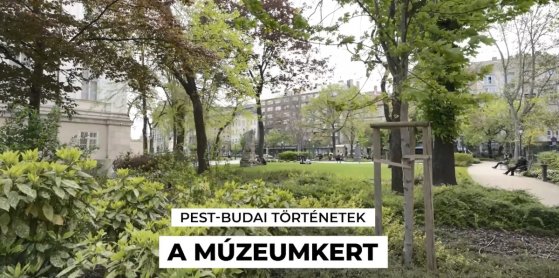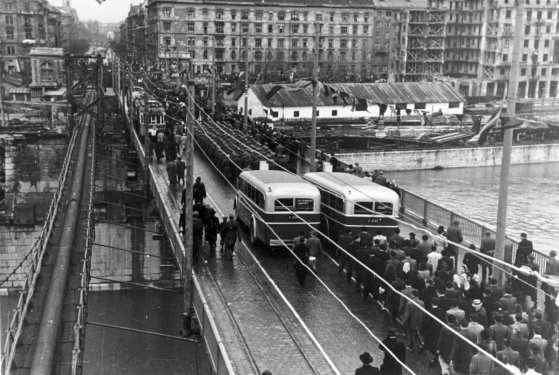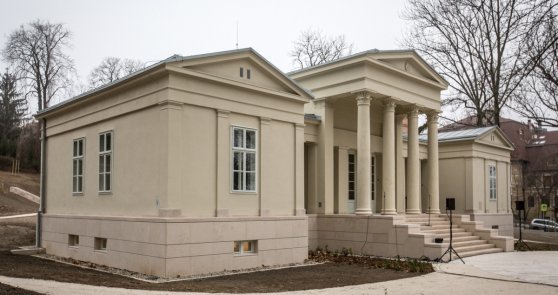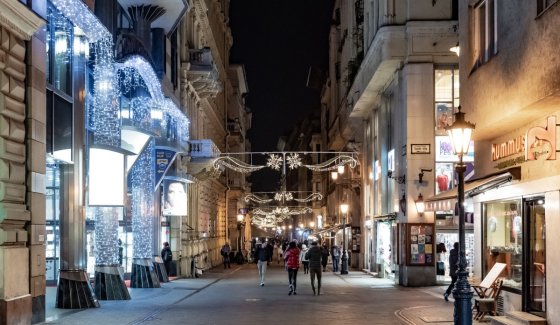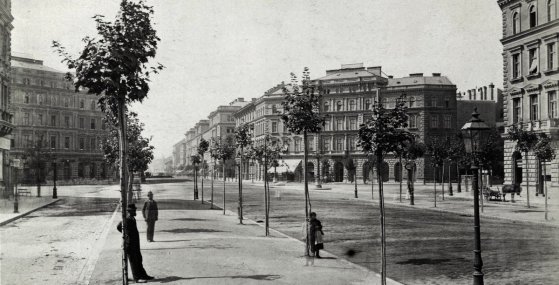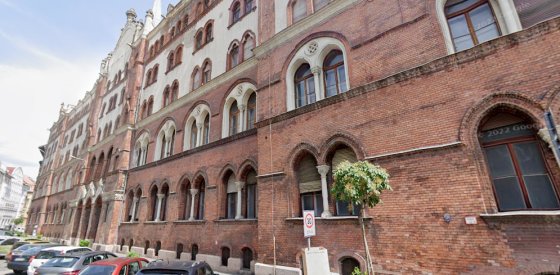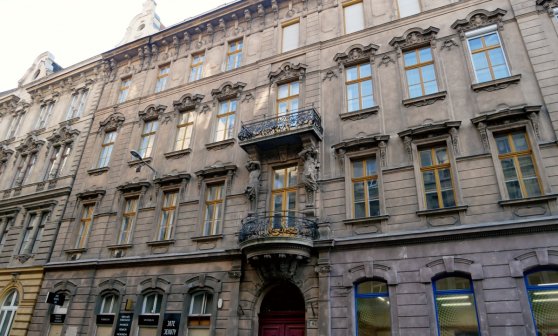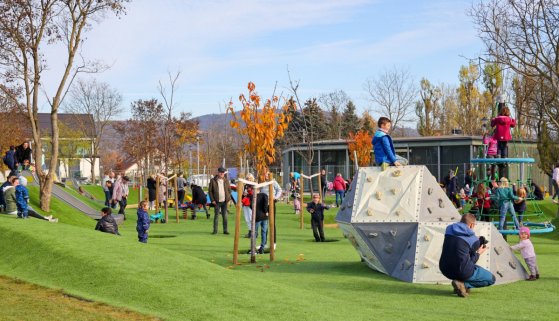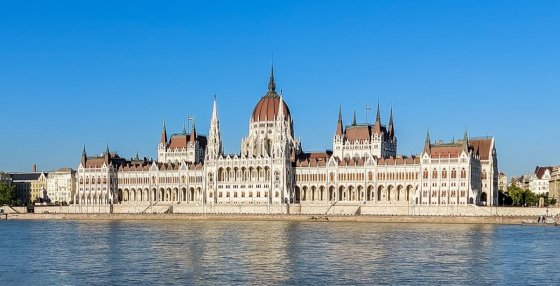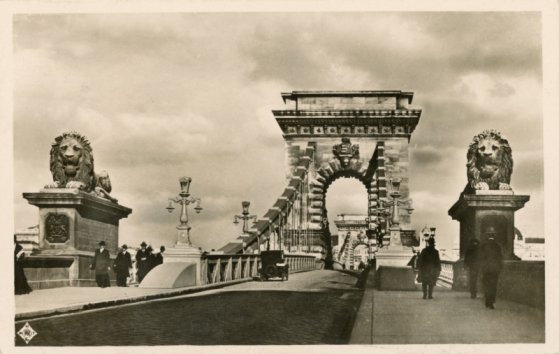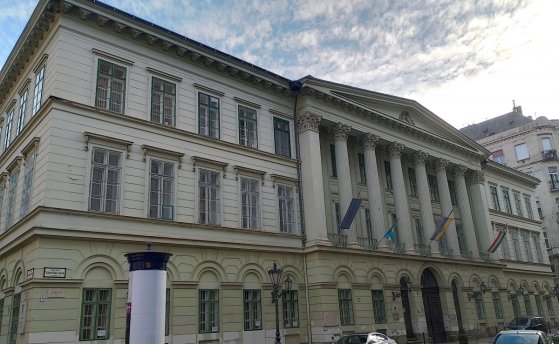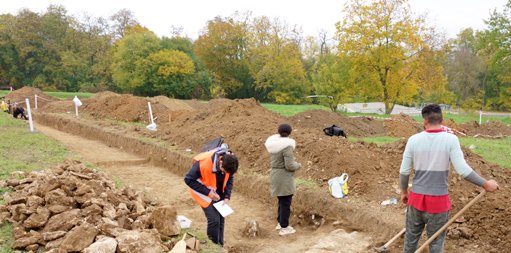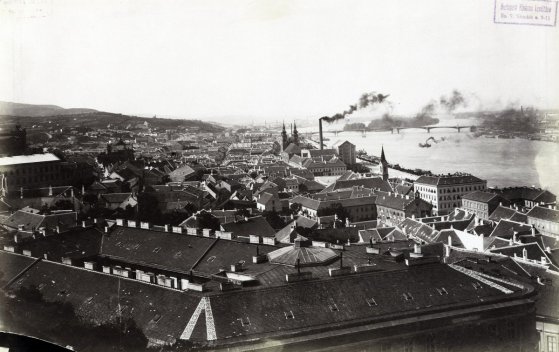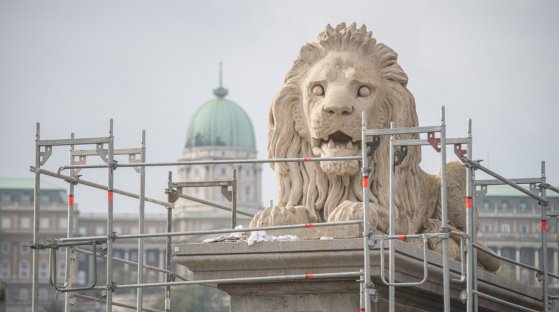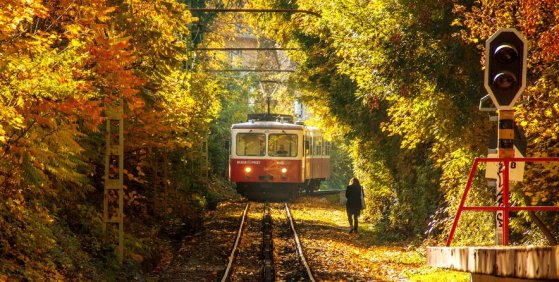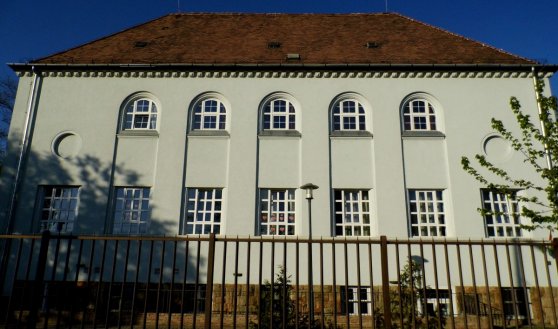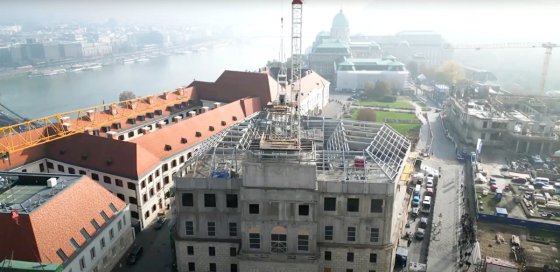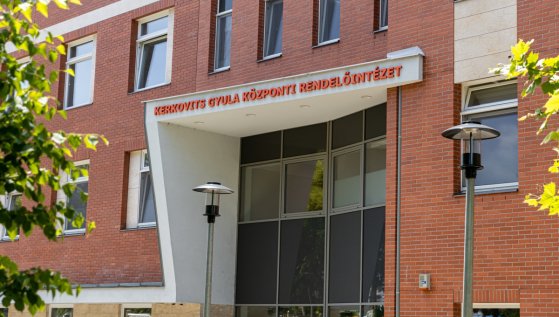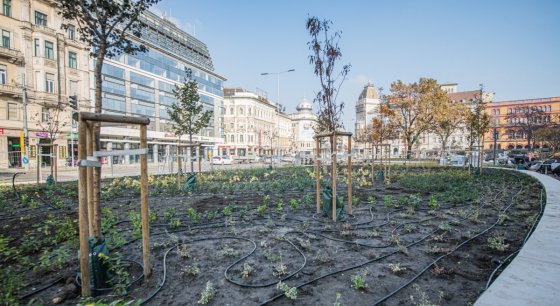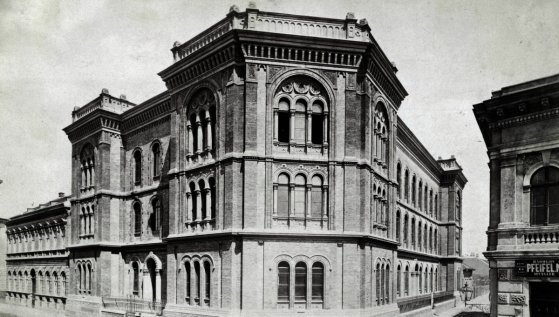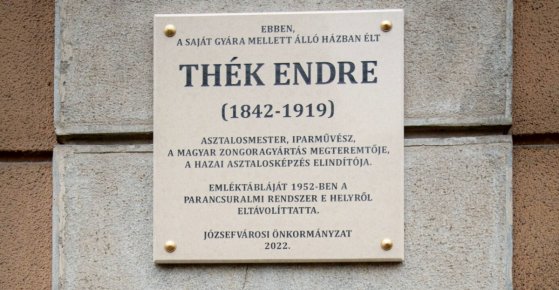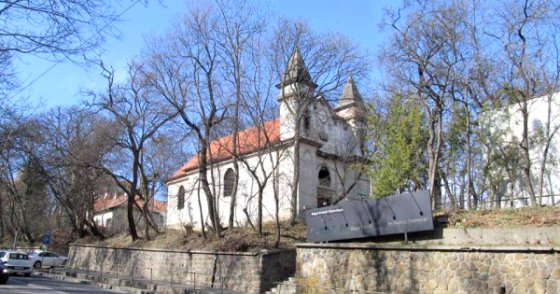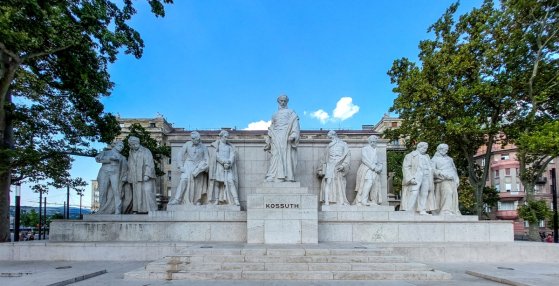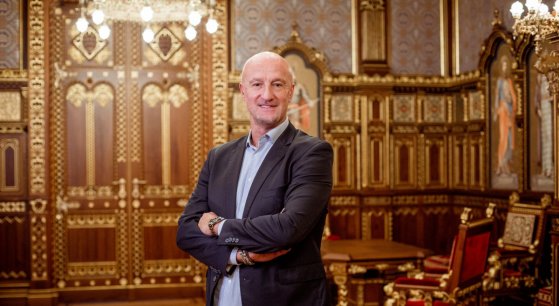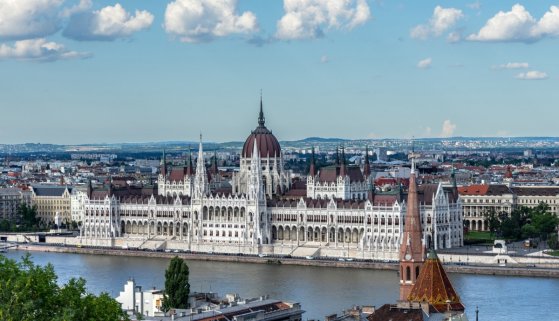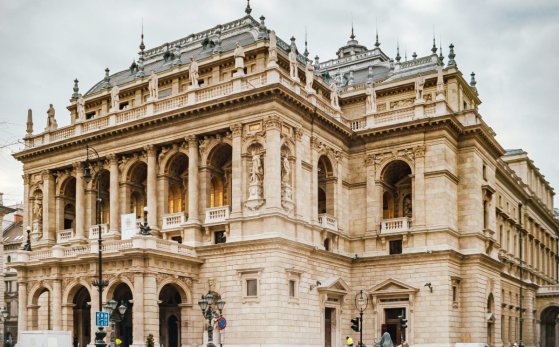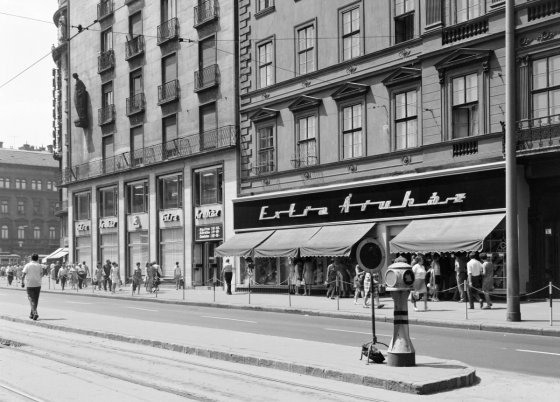 The „intertwined history” of the bridges and the city of Budapest
Which ideas and events have shaped the fate of bridges of Budapest and the cityscape? Alongside many other interesting facts, this question is also answered this newly published book by the Budapest City Archives, which introduces the history of bridges in Budapest.
The „intertwined history” of the bridges and the city of Budapest
Which ideas and events have shaped the fate of bridges of Budapest and the cityscape? Alongside many other interesting facts, this question is also answered this newly published book by the Budapest City Archives, which introduces the history of bridges in Budapest.
Budapest
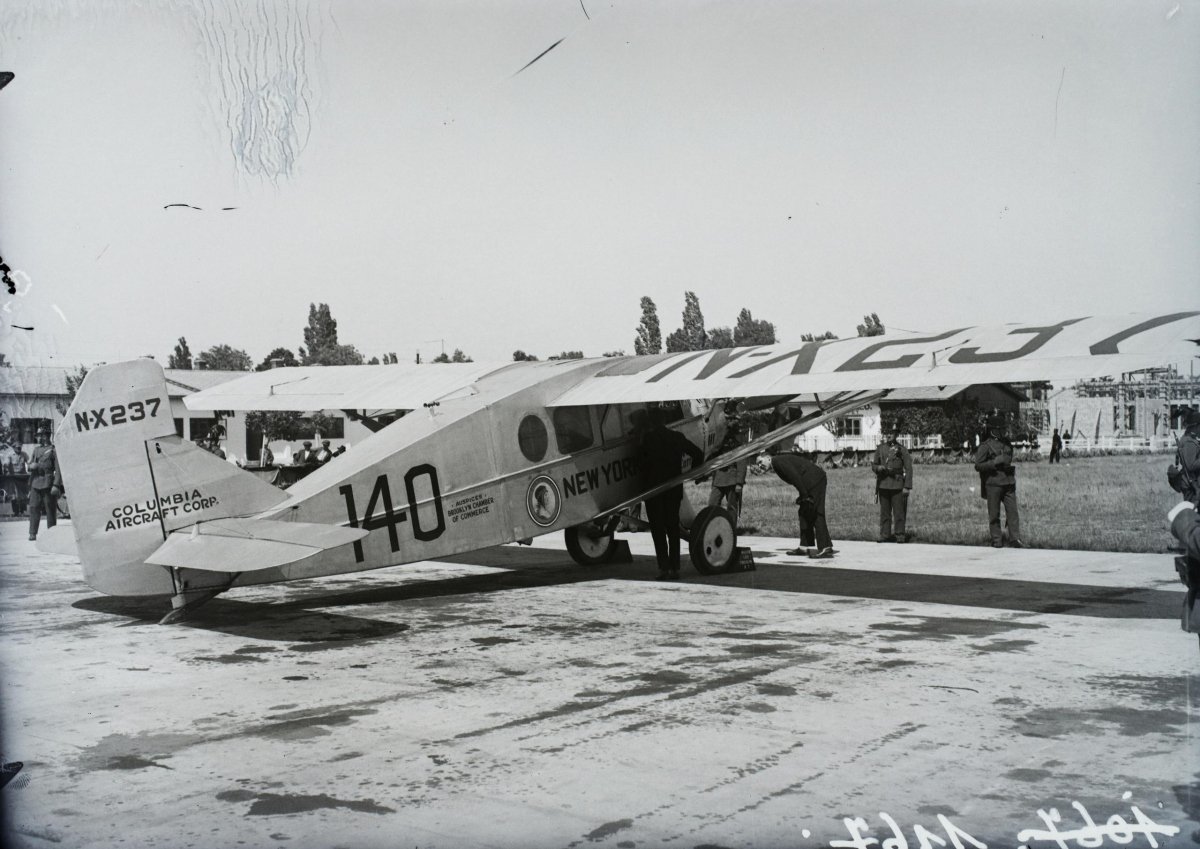 The Trianon flight ban was lifted 100 years ago
The Trianon flight ban was lifted 100 years ago
November 21, 2022 at 11:00 AM
Aviation became available to civilians after World War I. New flights appeared one after another in the passenger and mail traffic of European countries, and more and more cities were connected by aeroplanes. However, Budapest could only join air traffic later, because the ban on flights that hit Hungary based on the Treaty of Trianon remained in force until 17 November 1922.
The Museum Garden, where Petőfi also visited - The scene of liberty, love and history
November 20, 2022 at 1:00 PM
The garden of the Hungarian National Museum is a symbolic place, the emblematic location of the events of 15 March 1848, which earned its name: the garden of the nation. It is one of Budapest's most popular public parks, which was already a popular resting place for city residents in the 19th century. In the Museum Garden, visitors can see the statues of famous writers and heroes of liberty, among its oldest trees is the Japanese acacia, which already saw the funeral of Lajos Kossuth in 1894, and it is where the Paul Street boys played in Ferenc Molnár's famous novel. Pestbuda's video reveals how much people had to pay to sit on the bench in the past, what the future Queen of Albania did here and how long 15 March has been celebrated in the garden of freedom and love.
The Vizafogó Park and pavilion building won the Budapest Architecture Award
November 19, 2022 at 7:30 PM
This year's winner of the Budapest Architecture Award was the Vizafogó Park and pavilion building in the 13th District. The Attila 99 Loft apartment house, the hotel and condominium apartments in the former Józsefváros Telephone Centre, the A15 villa in Zugliget, the Budafoki Zöldike Nursery, as well as the Bakáts Square and surface arrangement of the connecting streets received praise.
The exploded Margit Bridge: the half-reconstructed crossing was handed over 75 years ago
November 19, 2022 at 11:00 AM
The elegant arches of Margit Bridge are one of Budapest's jewels. This graceful and beautiful structure was also destroyed by the Germans in World War II. The bridge was rebuilt in two parts, the southern side was handed over 75 years ago: it was open to the public from 16 November 1947.
Following József Hild
November 18, 2022 at 6:30 PM
Classicist houses in the centre of Pest, elegant villas on Svábhegy, and the outstanding works of a great Hungarian architect: those interested can get to know the legacy of József Hild in the coming weeks, through the buildings they can find out what the era was like in which he created, how Pest and Buda developed during the booming period of Reformation in a special atmosphere.
Decorative lighting for Christmas will be up in the most important public areas of the inner city
November 18, 2022 at 3:00 PM
There will be a Christmas market on Vörösmarty Square and in front of St. Stephen's Basilica, and Christmas lighting will be up on Szabadság Square, Ferenciek Square, Váci Street, Egyetem Square, Olimpia Park and a few other streets. Although in fewer places but the inner city will be dressed in festive lights, the 5th District Local Council takes care of the Christmas atmosphere.
Lajos Lechner, the creator of modern Budapest, died 125 years ago
November 18, 2022 at 9:00 AM
Lechner is a well-known name in the world of architecture and engineering: the former is mainly due to Ödön Lechner, and the latter to Lajos Lechner. Despite the same family name, they were not related, and their artistic and technical talent developed independently of each other. Lajos, who died 125 years ago, moved on a completely different path than Ödön, who was a good decade younger than him. Take a look at a summary of what Hungary and especially Budapest, owes to him.
Conversion of the former BÁV headquarters will be postponed
November 16, 2022 at 5:00 PM
According to previous plans, the Károli Gáspár University of the Reformed Church would move into the former Central Pawnbroker Offices monument building on the corner of Kinizsi and Lónyay Streets in the 9th District. However, the public procurement procedure announced in the spring was declared ineffective due to a lack of funds.
The renewed building of the Franciscans in Pasarét was handed over
November 16, 2022 at 2:00 PM
In a quiet green area of Buda, on Szilfa Street in the 2nd District, the building of the Franciscan order can be found, which also houses a kindergarten and a day care centre for the elderly. The house was completely renovated and remodelled this year, the slate roof was replaced, and its ceremonial inauguration took place a few days ago.
The house where Kálmán Mikszáth regained his zest for life
November 16, 2022 at 9:00 AM
Lovers of literature must have thought many times about the circumstances under which a masterpiece of their favourite author was born. In what environment was that particular poem or novel written, in what state of mind was the poet or writer, did he work in a coffee house, or did he write down the famous lines and sentences at home, or sitting in the open air, in the shade of a tree. Pestubda now presents Kálmán Mikszáth's home on Lónyay Street, where the writer wrote several novels.
Citizens waited four years for it: the Community Park was handed over in Máriaremete
November 15, 2022 at 8:00 PM
The new leisure park has been completed in Máriaremete in the 2nd District, on the block of land that also includes the Dezső Gyarmati Swimming Pool and the József Pokorny Sports and Leisure Centre. The concept of the Community Park was developed back in 2018, and the residents of the neighbourhood were able to take possession of the area a few days ago, which also includes sports fields, a playground, a jogging track, and a fitness park.
The heating of the Parliament will only be modernised in the next cycle - The placement of the Holy Crown must be taken care of as well
November 15, 2022 at 2:30 PM
The House of Parliament was handed over in the fall of 1902, but the heating of the nearly 18,000-square-metre public building - which was one of the world's first district heating systems - has never been modernised. The assessment of outdated technical systems has already begun in Budapest's best-known monument, and the investment plan and cost estimate will be completed by 31 May 2023. After that, the government will decide whether planning for the internal reconstruction and modernisation of the building can begin, and then it will also be decided whether the National Assembly will have to move out during the renovation period.
Wooden blocks, small stone blocks, asphalt - All about the roads of the Chain Bridge
November 15, 2022 at 10:00 AM
The asphalt track of the Chain Bridge has been completed in the past few days, and the load testing has already been carried out. This is the umpteenth roadway of the bridge, and it has probably changed the most in the last nearly 175 years.
Whose masterpieces were demolished: Mátyás Zitterbarth Jr. died 155 years ago
November 14, 2022 at 9:00 AM
The development of a large city is always accompanied by the demolition of buildings, as old ones are replaced by new ones that already meet modern needs. Mátyás Zitterbarth Jr., who created in the first half of the 19th century, largely fell victim to this phenomenon. However, he was a brilliant architect, which is proven by the fact that the mayors of the city of Pest entrusted him with the design of important public buildings. Pestbuda now presents his demolished and still-standing works.
Archaeologists have researched a Roman villa built in the 4th century, from the last period of Aquincum
November 13, 2022 at 10:00 AM
Archaeologists have been researching a Roman-era villa and its surroundings in the 3rd District in Harsánylejtő in recent weeks. The building was built in the last period of the ancient Aquincum, in the 4th century. According to experts, the majority of the inhabitants of the civilian city had already moved into the walls of the military city, and the former villa area of Aquincum was inhabited by soldiers or nobles who could pay for military protection.
Our everyday heat - Gas heating began to spread in Budapest 50 years ago
November 12, 2022 at 1:00 PM
Gas heating in Budapest was only built en masse in the 1970s, and after that, it became so popular that it was much easier to sell such apartments than those with electric or district heating. Due to the significant increase in energy prices, the way of heating apartments in the capital will likely have to be changed again. But take a look at what they used to light and how our ancestors heated in the past century and a half.
All four lions have returned to the Chain Bridge
November 11, 2022 at 8:00 PM
The lions decorating the Pest bridgeheads of the Chain Bridge have also returned to their original place, so the number is now complete: all four statues stand on the three-metre-high granite plinth, guarding the bridge's entrance. The restoration took more than a year.
The cogwheel railway will be shut down for the whole winter due to high energy prices
November 11, 2022 at 4:00 PM
The operation of the cogwheel railway will be suspended until spring - this was decided by the Budapest City Council, BKK and BKV. The public transport vehicle, officially numbered 60, has not been running since 3 October due to track renovation, but the outage would have lasted only until 17 November. Due to high energy prices, they are now stopping its traffic for several months.
Nuns and communists also used the present headquarters of the Institute for the Blind
November 11, 2022 at 10:00 AM
Hermina Road, which marks the eastern border of City Park, is primarily known for its churches: the Hermine Chapel, which also gives its name, and the Church of the Immaculate Conception on the corner of Ajtósi Dürer Way. However, between the two hides a lower, yet dignified-looking building, which was originally built by the Franciscan Missionaries of Mary and handed over ninety-five years ago.
The Headquarters of the Hungarian Defence Forces has reached its highest point
November 10, 2022 at 6:30 PM
The Dísz Square building of the former Hungarian Defence Forces Headquarters (or High Command), which is under reconstruction, has reached its highest point, and the structure of the dome has already been placed on top. On this occasion, following the traditions, a topping-out ceremony was held. The tree together with the steel frame of the roof lantern adorning the dome was raised to the roof of the palace in front of the guests invited to the ceremony.
The new specialist clinic of the Bajcsy-Zsilinszky Hospital was named after a renowned cardiologist
November 9, 2022 at 7:00 PM
The new Kőbánya specialist clinic on the corner of Maglódi Road and Lavotta Street in the 10th District started operating in March, and now it has officially received a new name. The institution was named after Gyula Kerkovits, the famous Hungarian cardiologist, in whose honour a relief was inaugurated at the entrance to the clinic.
Eighty trees are planted on Blaha Lujza Square
November 9, 2022 at 1:30 PM
The planting of trees has begun in Blaha Lujza Square, which is under renovation: a total of eighty new trees are being planted in the boxes previously created for them. In their surroundings, a skeletal soil was built to help the roots grow. It will remind people of the National Theatre, which was demolished and blown up in 1965, that the outline of the building will appear in the paving, and burgundy-coloured public furniture referring to the theatre's former chairs will be placed in the square. The renovation will be completed this year.
The rabbinical seminary opened its doors in Budapest 145 years ago
November 8, 2022 at 4:00 PM
In Budapest, at the corner of Bérkocsis and Bodzafa Streets in the Józsefváros district - at the intersection of today's Gutenberg Square, Scheiber Sándor and Somogyi Béla Streets - in October 1877, a solemn event took place that was rare even in the world of the time. The rabbinical seminary, in which Israelite students began their studies, opened its doors to the Hungarian Jewish people.
Endre Thék's memorial plaque was inaugurated in Józsefváros
November 8, 2022 at 11:30 AM
Endre Thék was the biggest figure in Hungarian furniture production. In honour of the master woodworker, furniture and piano manufacturer, a memorial plaque was placed on the building under 66C Üllői Road in the 8th District, where his home was. At the current inauguration, the original plaque removed in 1952 was replaced.
The Ferenchalmi Chapel is two hundred years old
November 7, 2022 at 5:30 PM
The Chapel of the Virgin Mary of Ferenchalom, located on Budakeszi Road, was consecrated two hundred years ago. The church, which is under monument protection, is now facing functional and architectural renewal. On the occasion of the jubilee, the Hungarian Charity Service of the Order of Malta opened a model and photo exhibition.
The speeches would have lasted four weeks if everyone had had the floor at the inauguration of the Kossuth Statue
November 6, 2022 at 1:30 PM
Sixty thousand people showed up at the inauguration of the Kossuth Statue that day, wreaths were laid by the country's top leaders, representatives of Hungarian settlements, the delegation of the United States and the city of Turin, representatives of countless foreign countries, but the Catholic Church was left out, and members of the Czechoslovak, Yugoslav, and Romanian embassy did not participate either. The monument was inaugurated 95 years ago today, on 6 November 1927, but the event was accompanied by huge controversies.
Marco Rossi in the St. Stephen's Hall
November 4, 2022 at 6:30 PM
Since its opening in August 2021, more than 100,000 people have already visited St. Stephen's Hall and the related exhibition. Marco Rossi, the captain of the Hungarian national football team, was the 100,324th visitor.
The interior renovation of the Parliament has been postponed
November 4, 2022 at 1:00 PM
Although the external renovation of the 120-year-old Parliament has been completed, its energy, mechanical, security systems and electrical network must also be modernised. The government decision published in Wednesday's issue of Magyar Közlöny talks about examining the possibilities of the expected multi-year internal renovation. The government has decided that when it is financially possible, it will support the start of the internal reconstruction of the Parliament, which is outdated in many ways.
The Medgyaszay Hall in the Opera House building was inaugurated
November 3, 2022 at 6:30 PM
A new event space of 430 square metres was handed over in the building of the Opera House. The Medgyaszay Hall, which can accommodate 100 people, can also be home to song evenings, exhibitions, chamber concerts, youth programs, choir and children's choir rehearsals.
Bauxite concrete panic in Budapest - All affected houses were inspected 55 years ago
November 3, 2022 at 11:00 AM
In the 1960s, experts assumed with horror that a time bomb was ticking in the buildings of Budapest. A hotel ceiling crashed in, an apartment building began to crack incredibly fast right in front of an architecture professor. Bauxite concrete was responsible, so they searched and examined all the affected buildings in the capital. All this happened 55 years ago.
More articles
 The „intertwined history” of the bridges and the city of Budapest
Which ideas and events have shaped the fate of bridges of Budapest and the cityscape? Alongside many other interesting facts, this question is also answered this newly published book by the Budapest City Archives, which introduces the history of bridges in Budapest.
The „intertwined history” of the bridges and the city of Budapest
Which ideas and events have shaped the fate of bridges of Budapest and the cityscape? Alongside many other interesting facts, this question is also answered this newly published book by the Budapest City Archives, which introduces the history of bridges in Budapest.
 The Bridge Report, which brought a turning point in the history of Budapest
A travel report that changed the history of Pest and Buda, as well as Hungary. The little book contributed to the change of half a thousand years of legal customs and the implementation of an investment of unprecedented size and technical quality. This book was The Bridge Report [Hídjelentés in Hungarian].
The Bridge Report, which brought a turning point in the history of Budapest
A travel report that changed the history of Pest and Buda, as well as Hungary. The little book contributed to the change of half a thousand years of legal customs and the implementation of an investment of unprecedented size and technical quality. This book was The Bridge Report [Hídjelentés in Hungarian].
 Drama on the university wall - The heroic monument was planned 95 years ago
In the constant hustle and bustle of the Egyetem Square in Pest, the students may not even notice the monument that decorates the short section of wall between the church and the central building of ELTE. However, it commemorates their predecessors, the heroes who fought for their country in World War I, and those who heroically helped them. The first design of the dramatically collapsing soldier was born in 1928, ninety-five years ago.
Drama on the university wall - The heroic monument was planned 95 years ago
In the constant hustle and bustle of the Egyetem Square in Pest, the students may not even notice the monument that decorates the short section of wall between the church and the central building of ELTE. However, it commemorates their predecessors, the heroes who fought for their country in World War I, and those who heroically helped them. The first design of the dramatically collapsing soldier was born in 1928, ninety-five years ago.

